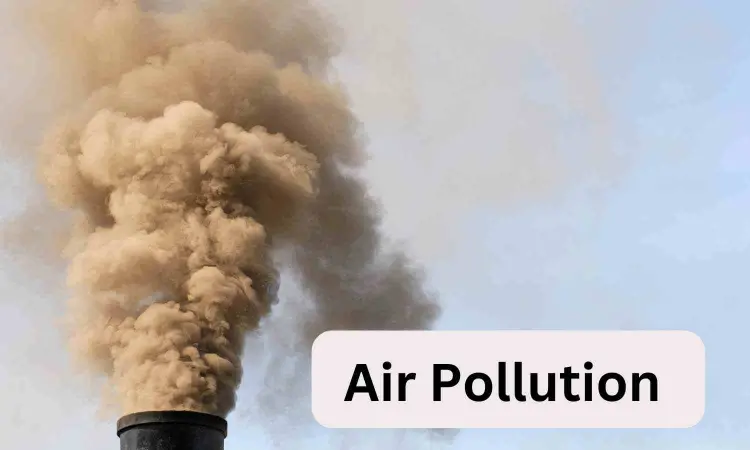- Home
- Medical news & Guidelines
- Anesthesiology
- Cardiology and CTVS
- Critical Care
- Dentistry
- Dermatology
- Diabetes and Endocrinology
- ENT
- Gastroenterology
- Medicine
- Nephrology
- Neurology
- Obstretics-Gynaecology
- Oncology
- Ophthalmology
- Orthopaedics
- Pediatrics-Neonatology
- Psychiatry
- Pulmonology
- Radiology
- Surgery
- Urology
- Laboratory Medicine
- Diet
- Nursing
- Paramedical
- Physiotherapy
- Health news
- Fact Check
- Bone Health Fact Check
- Brain Health Fact Check
- Cancer Related Fact Check
- Child Care Fact Check
- Dental and oral health fact check
- Diabetes and metabolic health fact check
- Diet and Nutrition Fact Check
- Eye and ENT Care Fact Check
- Fitness fact check
- Gut health fact check
- Heart health fact check
- Kidney health fact check
- Medical education fact check
- Men's health fact check
- Respiratory fact check
- Skin and hair care fact check
- Vaccine and Immunization fact check
- Women's health fact check
- AYUSH
- State News
- Andaman and Nicobar Islands
- Andhra Pradesh
- Arunachal Pradesh
- Assam
- Bihar
- Chandigarh
- Chattisgarh
- Dadra and Nagar Haveli
- Daman and Diu
- Delhi
- Goa
- Gujarat
- Haryana
- Himachal Pradesh
- Jammu & Kashmir
- Jharkhand
- Karnataka
- Kerala
- Ladakh
- Lakshadweep
- Madhya Pradesh
- Maharashtra
- Manipur
- Meghalaya
- Mizoram
- Nagaland
- Odisha
- Puducherry
- Punjab
- Rajasthan
- Sikkim
- Tamil Nadu
- Telangana
- Tripura
- Uttar Pradesh
- Uttrakhand
- West Bengal
- Medical Education
- Industry
Air Pollution Exposure Raises Risk of Death and Graft Failure in Lung Transplant Patients: JAMA

Union Health Ministry Mandates Chest Clinics, Surveillance Amid Severe Air Pollution
USA: A recent study has highlighted a concerning connection between ambient air pollution and health outcomes in lung transplant patients. Researchers found that higher levels of fine particulate matter (PM2.5) in the air, specifically at the zip code level, were linked to a greater risk of death or graft failure among these vulnerable individuals. The findings underscore the urgent need to address air quality as part of post-transplant care.
"Living in a zip code with high levels of ambient fine particulate matter was linked to a greater risk of death or graft failure, with adjusted hazard ratios of 1.08 at the previous Environmental Protection Agency standard of 12 μg/m³ and 1.07 at the updated threshold of 9 μg/m³. Additionally, each increase of 1 μg/m³ in exposure at the zip code level raised the hazard by 1%," the researchers reported in JAMA Network Open.
Lung transplant recipients often face numerous challenges in maintaining their health, and the introduction of external factors such as air pollution can complicate their recovery. PM2.5, tiny particles that can penetrate deep into the lungs and enter the bloodstream, has been known to contribute to several health problems, including respiratory and cardiovascular diseases.
Elevated exposure to ambient PM2.5 air pollution has been linked to adverse health outcomes in various areas, yet its specific effects on lung transplant recipients remain largely unclear. To address this knowledge gap, Olawale Amubieya, University of California, Los Angeles, and colleagues sought to determine whether higher PM2.5 levels in patients' residential zip codes are associated with increased risks of mortality and graft failure among lung transplant recipients.
For this purpose, the researchers conducted a retrospective cohort study using data from the United Network for Organ Sharing, which includes lung transplant patients from active programs across the U.S. They included adult patients who received lung transplants between May 2005 and December 2016, with follow-up data available until September 10, 2020. The analysis took place from September 2022 to May 2023.
Annual PM2.5 exposure at the zip code level was estimated using established North American data. The primary outcome was the time to death or lung graft failure after the transplant. To assess the relationship between zip code PM2.5 exposure at the time of transplant and the risks of graft failure or mortality, the researchers used a gamma shared frailty Cox proportional hazards model to calculate both unadjusted and adjusted hazard ratios.
Based on the study, the researchers reported the following findings:
- Among 18,265 lung transplant recipients, with an average age of 55.3 years and 40.2% being female, 9.8% lived in areas where the annual PM2.5 exposure met or exceeded the Environmental Protection Agency (EPA) standard of 12 μg/m³. The remaining 90.2% lived in areas with lower levels.
- In unadjusted analysis, the median graft survival was 4.87 years for those in high PM2.5 areas and 5.84 years for those in low PM2.5 areas.
- Living in areas with PM2.5 levels at or above the EPA standard was linked to a higher risk of death or graft failure, with an unadjusted hazard ratio of 1.11.
- After adjusting for other factors, the hazard ratio remained significant at 1.08.
- Each increase of 1 μg/m³ in PM2.5 exposure was associated with a slightly higher risk of death or graft failure, with an adjusted hazard ratio of 1.01.
The study found that higher levels of ambient PM2.5 exposure at the zip code level were linked to an increased risk of death or graft failure in lung transplant recipients.
"Further research is necessary to explore this relationship more deeply, which could inform strategies for reducing risks both for individuals and across populations," the researchers concluded.
Reference:
Amubieya O, Weigt S, Shino MY, et al. Ambient Air Pollution Exposure and Outcomes in Patients Receiving Lung Transplant. JAMA Netw Open. 2024;7(10):e2437148. doi:10.1001/jamanetworkopen.2024.37148
Dr Kamal Kant Kohli-MBBS, DTCD- a chest specialist with more than 30 years of practice and a flair for writing clinical articles, Dr Kamal Kant Kohli joined Medical Dialogues as a Chief Editor of Medical News. Besides writing articles, as an editor, he proofreads and verifies all the medical content published on Medical Dialogues including those coming from journals, studies,medical conferences,guidelines etc. Email: drkohli@medicaldialogues.in. Contact no. 011-43720751


